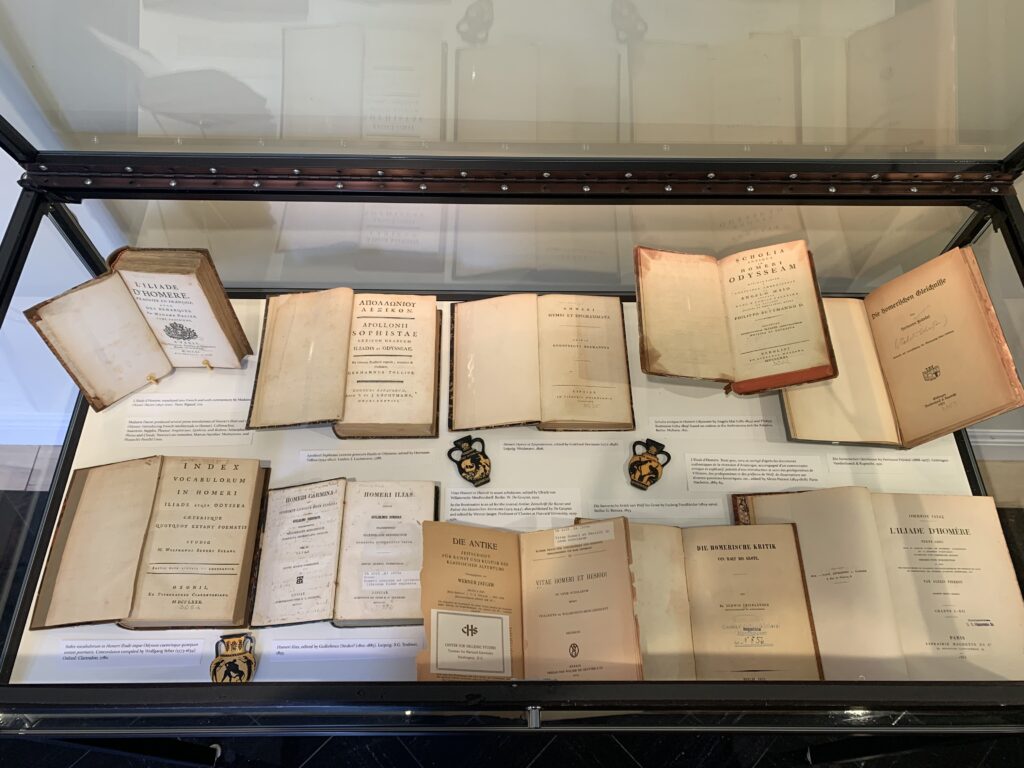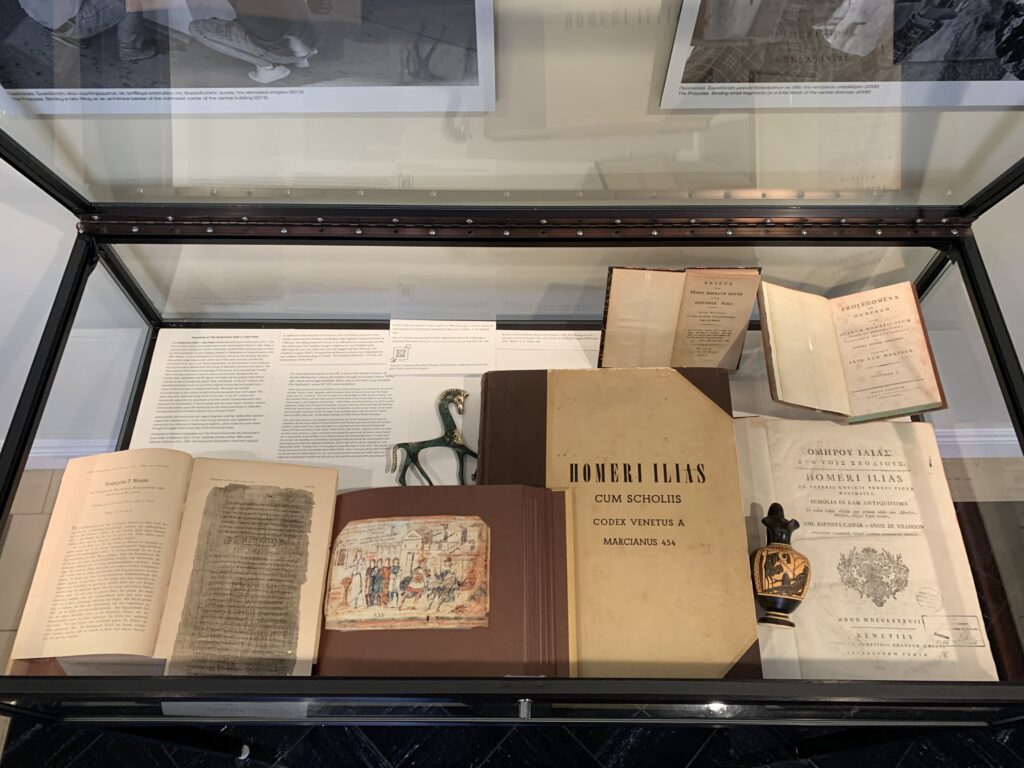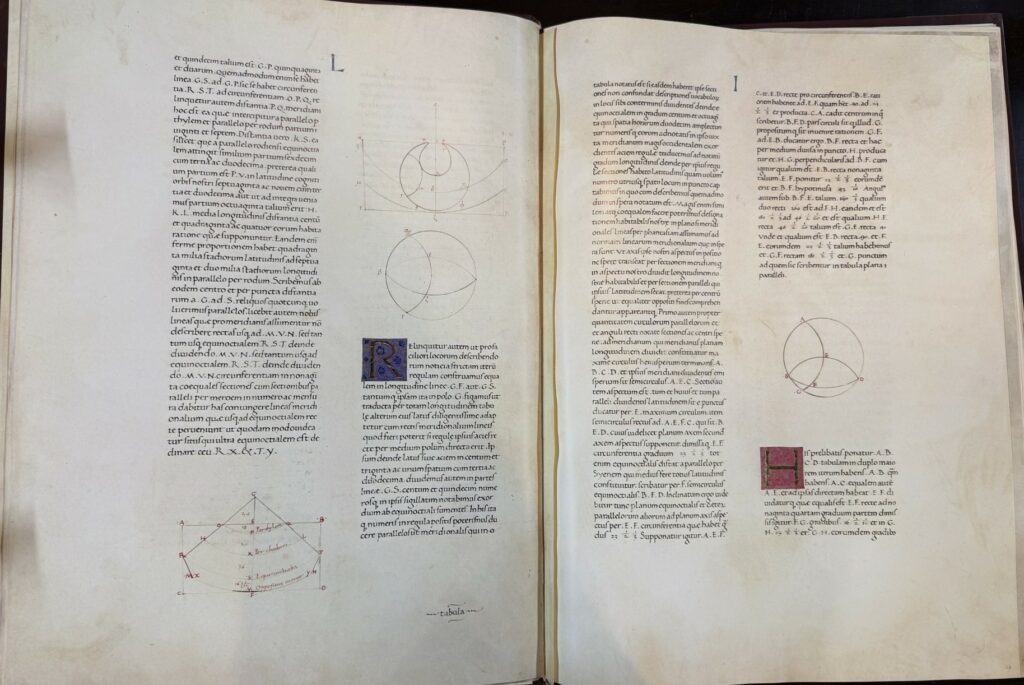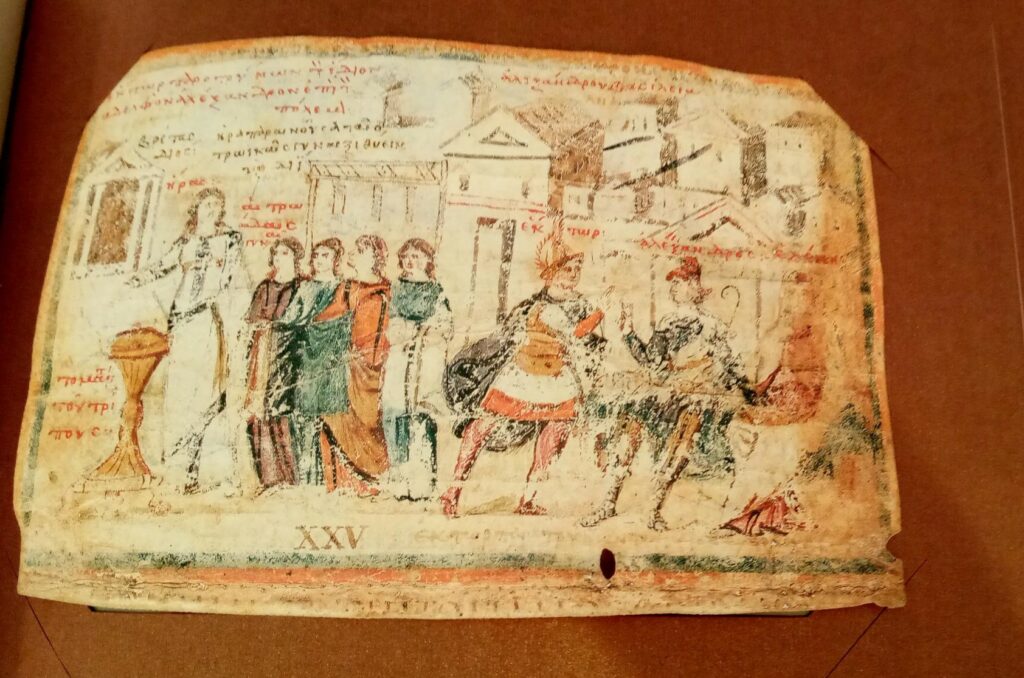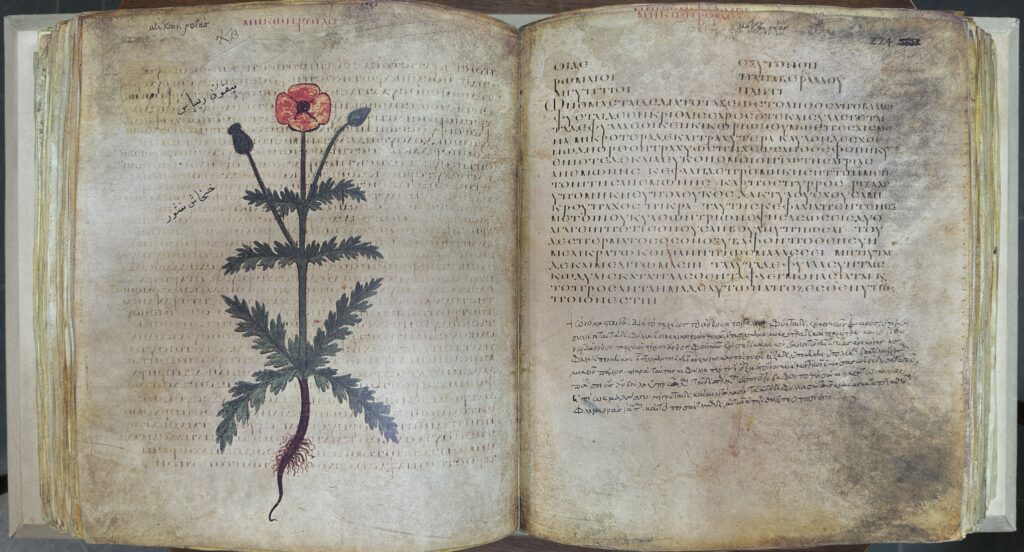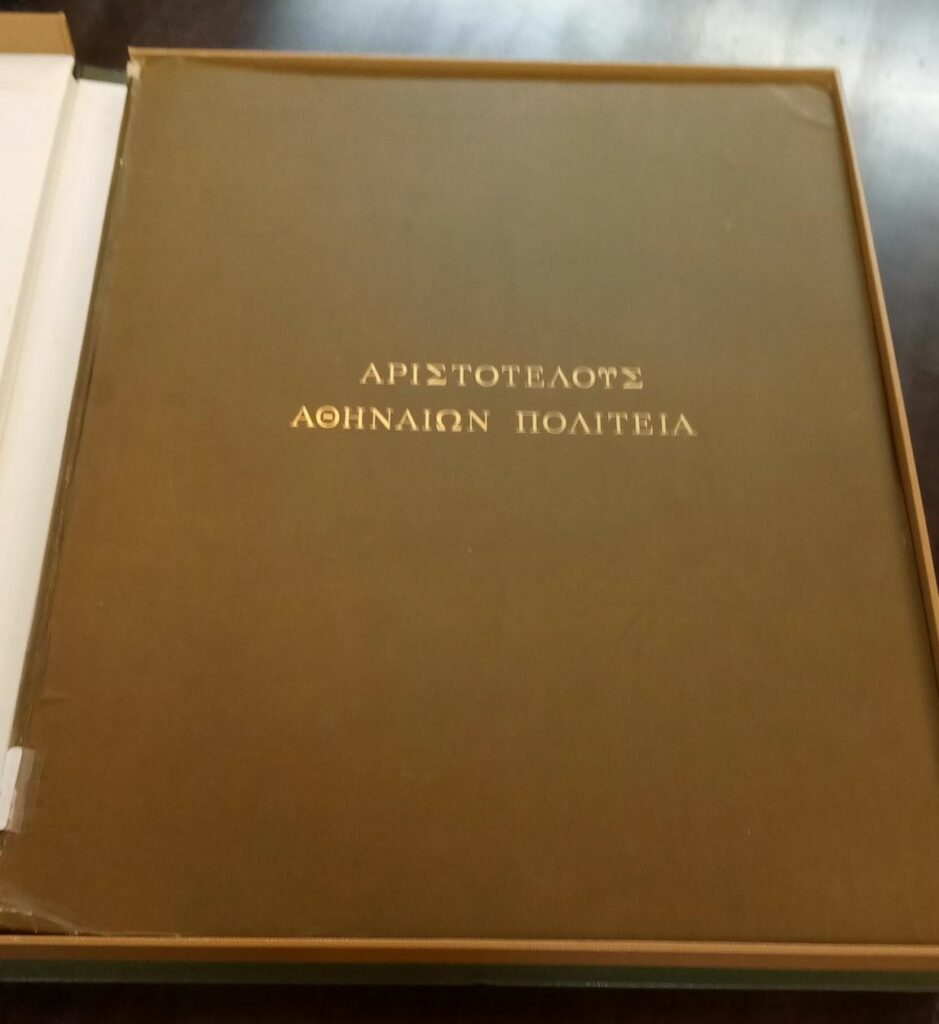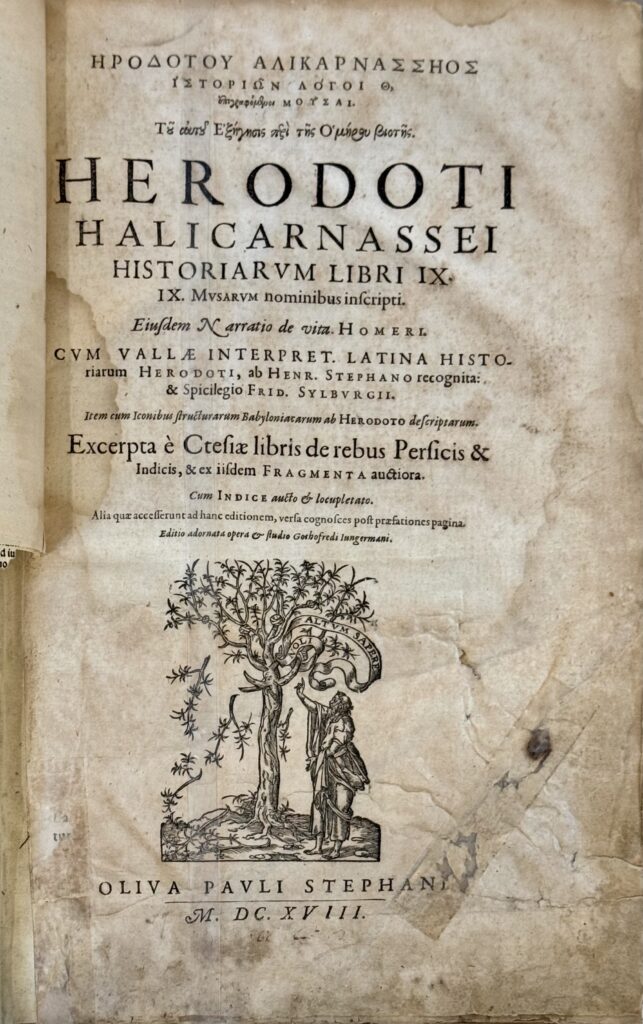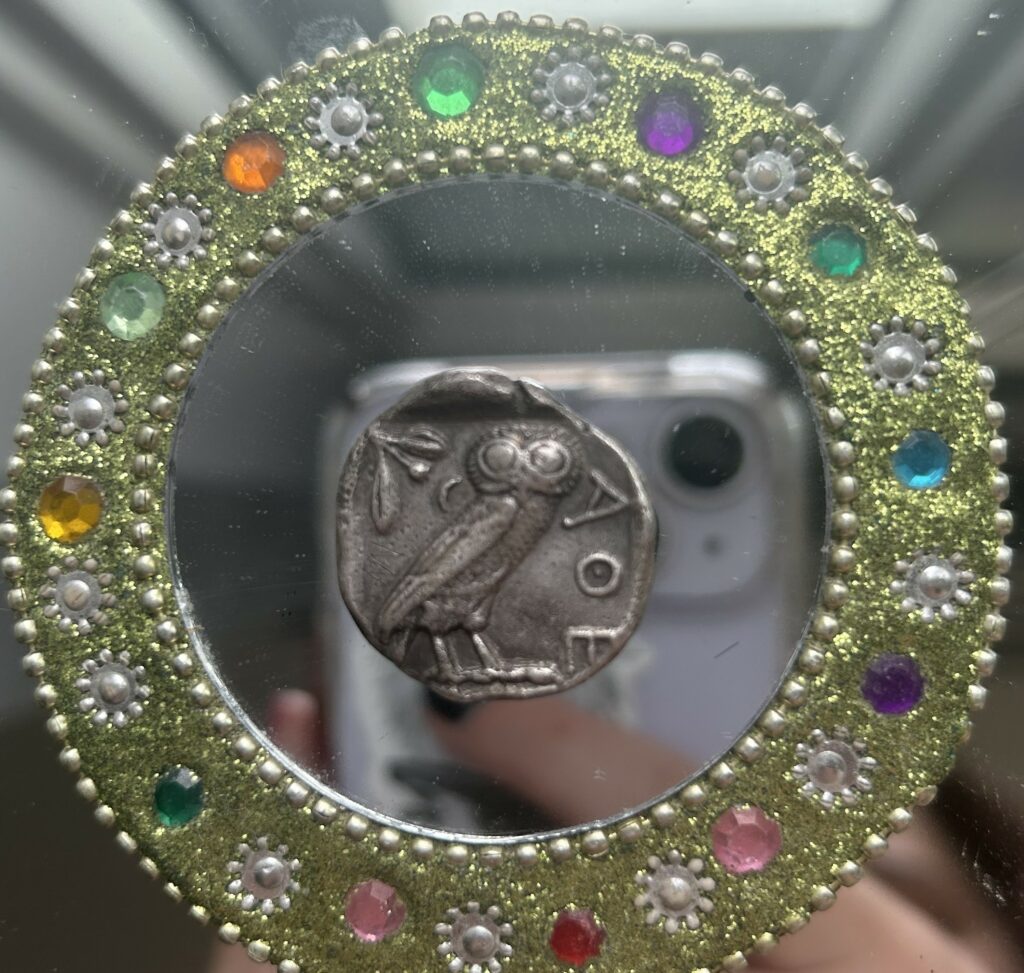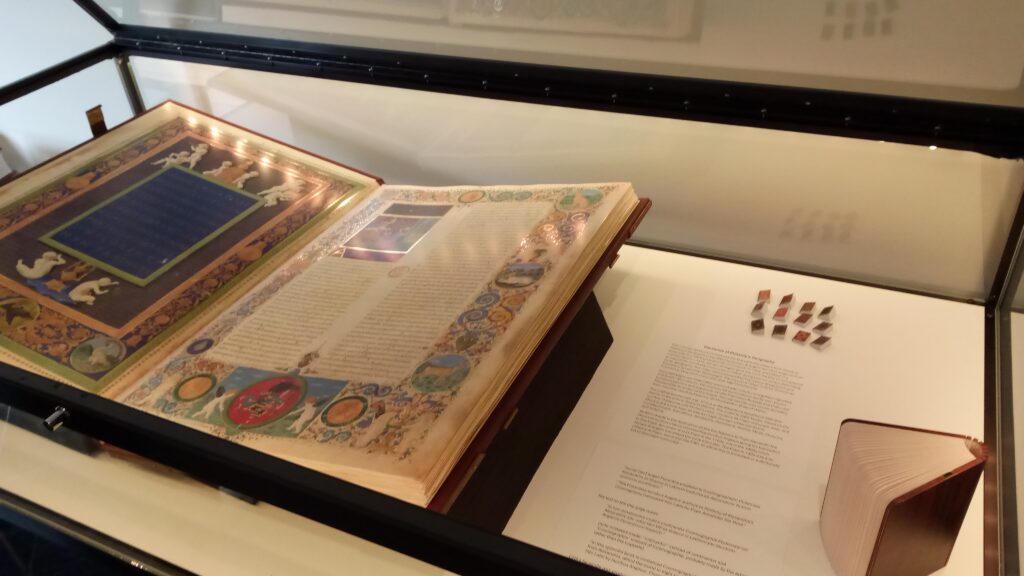
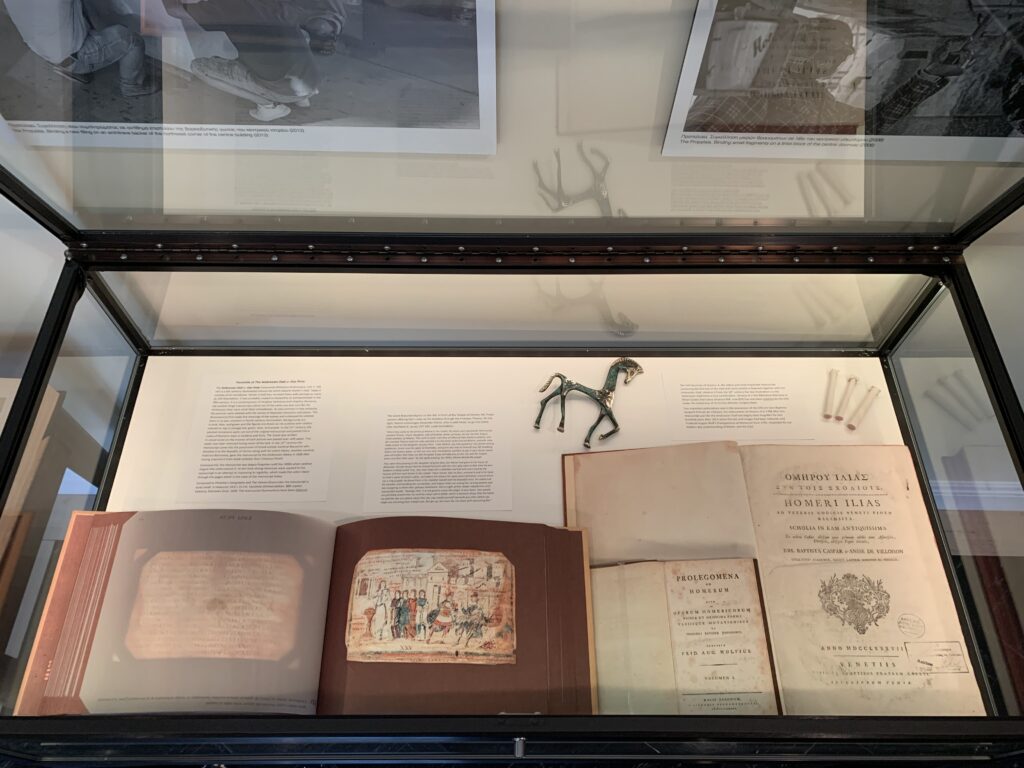

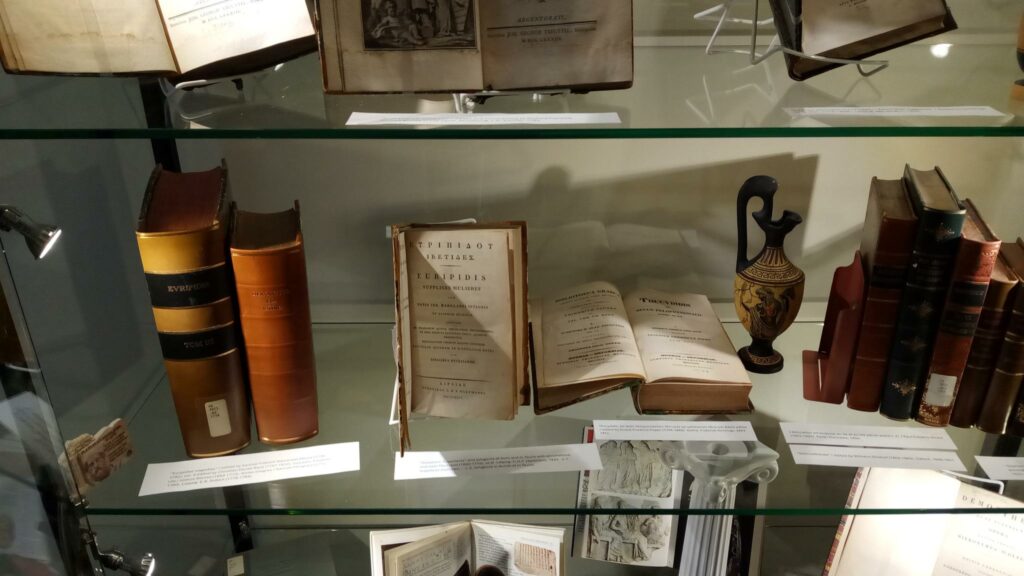



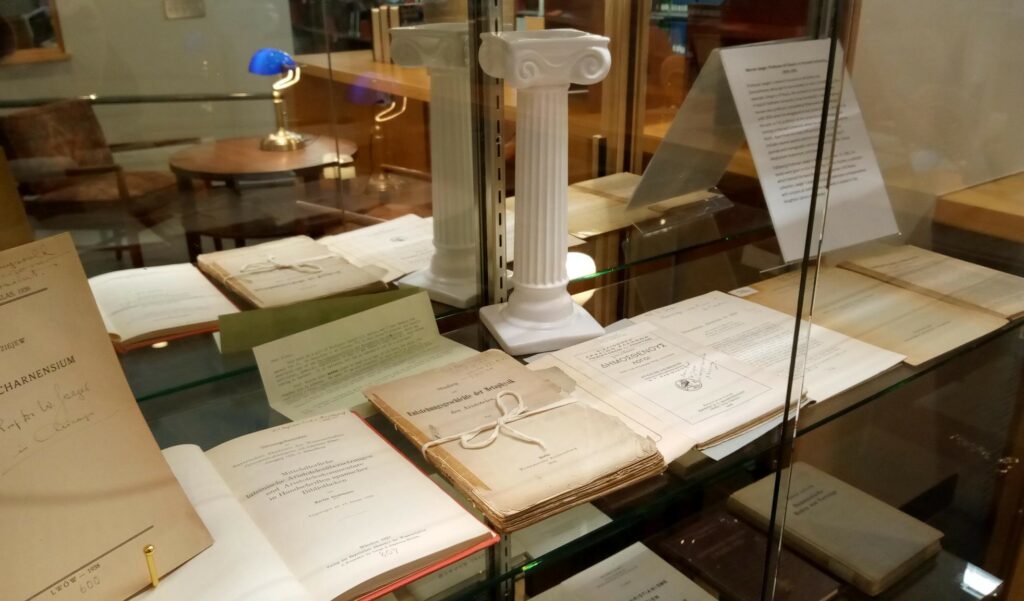

Homer Translations in a Golden Age
In connection with a CHS conference on November 7, 2025, the library curated an exhibition of Homer scholia and translations. Included were classic translations as those of George Chapman, Alexander Pope, Samuel Butler, T.E. Lawrence (“Lawrence of Arabia”), Richmond Lattimore, and Robert Fagles, and more contemporary ones by Caroline Alexander, Daniel Mendelsohn, Richard Whitaker (South African translation), and Emily Wilson in addition to translations into other languages such as those of Madame Dacier (1647-1720) whose translations of the Iliad and the Odyssey introduced a French audience to Homer. Also included was John Flaxman’s (1755-1826) illustrations of scenes from the Iliad and the Odyssey.
